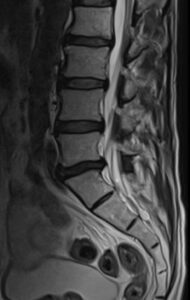
Dr. Petya Stefanova
Teacher
Assistant at the Faculty of Medicine at Sofia University and resident physician in Neurology at Sofiamed University Hospital.
Въпроси
Резюмета
Видеа
Аудио
Как се променя походката при церебеларна увреда?
септември 24, 2023
Кои от изброените тестове се използват за оценка на координацията при снемане на неврологичен статус?
септември 24, 2023
При теста на Ромберг пациентът залита с отворени и затворени очи. Каква е интерпретацията на теста?
септември 24, 2023
Какъв е тестът на Ромберг при сензорна атаксия?
септември 24, 2023
Which type of general sense is responsible for detecting pressure and vibration in the body?
септември 19, 2023
Which sensation is typically assessed using a cotton ball or brush during a neurological examination?
септември 11, 2023
Why is it important to compare sensations bilaterally during a superficial sensation examination?
септември 11, 2023
Which area of the body corresponds to the L5 dermatome in neurological assessments?
септември 11, 2023
Which region of the hand is primarily innervated by the median nerve in neurological assessments?
септември 11, 2023
Clinical Case Question: A patient is experiencing numbness and tingling in the thumb, index finger, middle finger, and half of the ring finger. Which condition is commonly associated with these symptoms?
септември 11, 2023
What characterizes radicular syndrome in a patient’s presentation?
септември 11, 2023
Clinical Case Question: A patient reports progressive weakness, tingling, and numbness in both hands and feet. What condition is most likely causing this polyneuropathic syndrome?
септември 11, 2023
Which anatomical structures constitute the peripheral nervous system (PNS)?
септември 11, 2023
What is the primary function of ganglia, a crucial component of the peripheral nervous system (PNS)?
септември 11, 2023
Is the spinal cord considered part of the peripheral nervous system?
септември 11, 2023
What is the purpose of testing superficial sensations during a neurological examination?
септември 11, 2023
The darker area indicated with an arrow is:
септември 2, 2023
The darker area indicated with an arrow is supplied by:
септември 2, 2023
Which symptoms will most probably be observed in a patient with the following CT image?
септември 2, 2023
What is the routinely most commonly used test for evaluating atherosclerosis in the extracranial vessels?
август 22, 2023
Parkinson’s Disease Differential Diagnosis Questionnaire
октомври 18, 2024
Role of the Direct and Indirect Pathways in the Extrapyramidal System: Balancing Motor Control
октомври 14, 2024

The Unified Parkinson’s Disease Rating Scale (UPDRS)
октомври 11, 2024
Lewy Body Dementia with Parkinsonism versus Parkinson’s Disease
октомври 11, 2024

Protective Factors for Parkinson’s Disease: Physical Activity, Smoking, and Caffeine
октомври 6, 2024
Alpha-Synuclein vs. Tau Protein: A Comparative Overview
октомври 6, 2024
Diet Recommendations for Patients with Multiple Sclerosis
август 6, 2024
Wallenberg Syndrome (Lateral Medullary Syndrome)
август 6, 2024
No videos found
Fake Smiles, Real Damage: How Digital Joy Breeds Fear and Anger
май 3, 2025
Understanding Neuropsychological Evaluations: What to Expect
февруари 25, 2025
Невропсихологическо изследване – индикации, провеждане и резултати
февруари 24, 2025
Невропсихологическо изследване – индикации, провеждане и резултати
февруари 24, 2025





